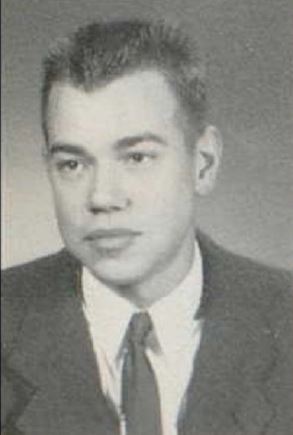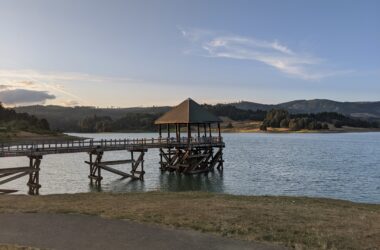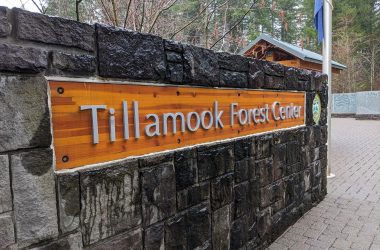The Oregon State Police are seeking public help in solving a cold case involving the body of a Washington County man discovered in the Tillamook State Forest in 2004 after new technology finally identified the body nearly two decades later last year.
Leslie Page Hickman was born in 1942 in Washington County, and disappeared sometime in 1967 or 1968, Oregon State Police (OSP) believe. In those 25 years, detectives with OSP believe he moved to Grants Pass, attended high school there, made a brief appearance in the pages of a newspaper after his arrest in a high speed car chase through Portland, may have worked in landscaping, and then vanished.
He was found, a November 3, 2004 Forest Grove New-Times story said, by an elk hunter, who stumbled upon what that newspaper described as “partial skeletal remains.”
The story notes that the discovery was reported to law enforcement authorities on October 20, 2004, spawning a two-day search of the area in Tillamook County a couple of miles from the only point in Oregon where four county corners meet—Clatsop, Tillamook, Washington, and Columbia—by Highway 26.
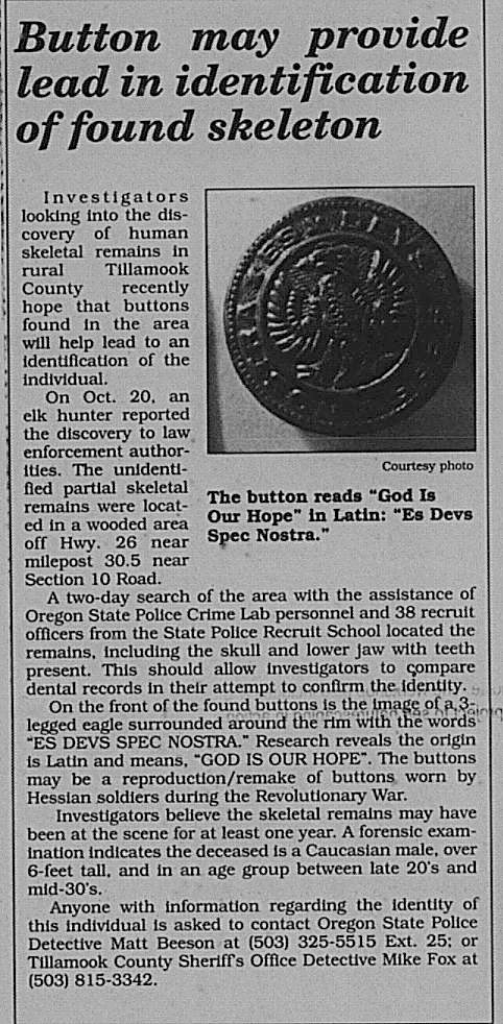
Dozens of law enforcement personnel came to the area; 38 recruit officers from the State Police Recruit School, then based in Monmouth, joined by staff from the Oregon State Police Crime Lab combed the area and found “remains, including the skull and lower jaw with teeth present,” giving a shot for law enforcement to compare dental records in their search for answers.
Investigators hoped a button found at the scene with the Latin inscription ES DEVS SPES NOSTRA (“God is our hope”), possibly a remake of a type of button worn by Hessian soldiers in the Revolutionary War, would prove helpful.
Numerous tips came in from the public, but the case went cold.
In the end, it wasn’t dental records that ultimately led to a positive identification, but DNA.
In July 2021, Parabon NanoLabs, a forensics company that serves as a vendor for OSP, delivered a DNA Phenotyping and Genetic Genealogy report that pointed to the skeletal remains being those of Leslie Page Hickman.
Investigative genetic genealogy is a process where DNA from human remains—or DNA from a suspect at a crime scene—is compared to a database of DNA which contains DNA information submitted by families of people who have gone missing. The process measures how much DNA is shared between two people, and then combined with more traditional genealogical research using historical records.
According to the Oregon State Police, Hickman, a white man who would have been about 25 when he disappeared, died in the late 1960s.
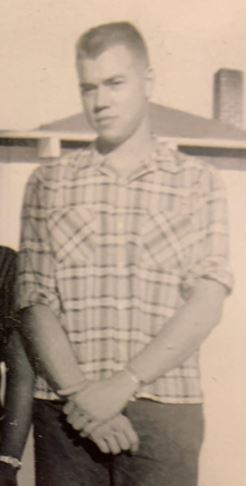
Following the report, OSP detectives interviewed living relatives and associates, located public records from the time, and eventually determined that the remains were indeed Hickman.
A spokesperson for the Oregon State Police told this newspaper that information wasn’t available on what part of Washington County Hickman lived in, and they hadn’t yet been able to determine which landscaping business he may have worked for.
“We do not have information about the landscaping business, which is one of the driving forces behind soliciting the public’s help,” said Mindy McCartt, OSP communications director in an email. “A fellow employee or employer at the time near his disappearance could be the key,” McCartt added.
OSP detectives pieced together a rough timeline of Hickman’s short life.
Born in Washington County in 1942, he eventually moved with his family to Grants Pass, attending high school there. Following high school, he left Grants Pass, heading for the Portland area. In 1965, when he was 22, he found himself in the pages of the Oregonian after leading numerous law enforcement agencies on a wild car chase that ended with his arrest and his car in flames.
According to an Oregonian story from April 15, 1965, a Portland patrol car began pursuing Hickman—living at the time in Portland on SE Salmon Street—near NW 10th Avenue and Glisan Street.
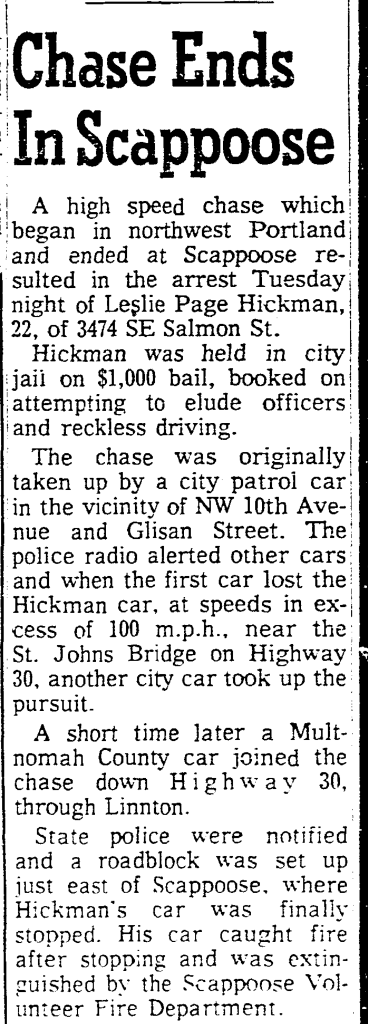
The first police car lost him near the St. Johns Bridge on Highway 30 after clocking him at speeds beyond 100 mph, and another city patrol car took up the chase, joined shortly after by a Multnomah County Sheriff’s Office vehicle. After passing through the Linnton neighborhood on the city’s western edge, Oregon State Police finally put a stop to the chase with a roadblock just east of Scappoose, where, after stopping Hickman’s vehicle, it broke into flames and was extinguished by the Scappoose Volunteer Fire Department.
Hickman was lodged in the Portland city jail on a $1,000 bail on charges of attempting to elude officers and reckless driving.
Hickman also spent time in the Umatilla area. Around the time of his disappearance in late 1967 or early 1968, Hickman may have been employed in the landscaping business.
The circumstances surrounding his death remain unknown.
Anyone who may have any information about the case is asked to contact Oregon State Police’s Dispatch at 800-442-0776 and reference case # SP04396253 and OSP Detective Jim O’Connor.
“Assistance provided can help Detectives provide closure to the living family members,” OSP said in a social media post.
The National Missing and Unidentified Persons System – NamUs is a national information clearinghouse and resource center for missing, unidentified, and unclaimed person cases across the United States. To learn more visit: namus.nij.ojp.gov.
Family members of people who have gone missing can upload their own DNA information, obtained from any commercial DNA service, at www.gedmatch.com.

Chas Hundley is the editor of the Banks Post and sister news publications the Gales Creek Journal and the Salmonberry Magazine. He grew up in Gales Creek and has a cat.

